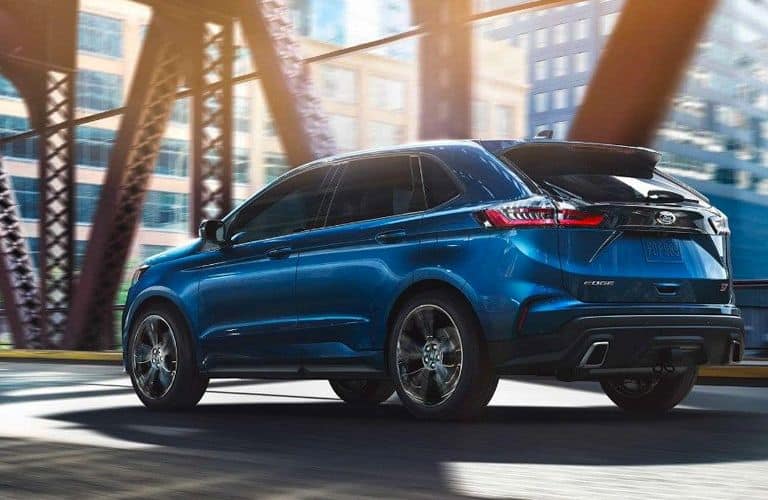Why Ford Will Be Successful In A World of Electric Vehicles
As the automotive industry accelerates toward an electric future, many traditional manufacturers face existential challenges. However, Ford Motor Company stands poised not only to survive but also to thrive in this new landscape. Beyond the obvious investments in electric vehicle technology, Ford possesses several unexpected advantages that position it for success in the electric era. […]
As the automotive industry accelerates toward an electric future, many traditional manufacturers face existential challenges. However, Ford Motor Company stands poised not only to survive but also to thrive in this new landscape. Beyond the obvious investments in electric vehicle technology, Ford possesses several unexpected advantages that position it for success in the electric era.

Strategic Transition Through Hybrid Technology
The Ford approach to electrification differs from many competitors through its strategic deployment of hybrid technology as a transitional step. The F-150 PowerBoost hybrid exemplifies this philosophy, introducing truck buyers to the benefits of electrification without the perceived compromises of full-electric vehicles.
The PowerBoost system, available across XLT, Lariat, King Ranch, Platinum, and Limited trims, delivers 430 horsepower and 772 Nm of torque while achieving fuel economy approximately 30% better than comparable non-hybrid variants. This incremental approach builds customer confidence in electrified powertrains while maintaining the capability that truck owners demand.
Scale and Flexibility
Unlike many EV startups struggling with production challenges, Ford brings over a century of manufacturing expertise to electric vehicle production. The company’s ability to rapidly convert existing facilities to EV production demonstrates a key advantage over competitors building from scratch.
Ford manufacturing flexibility allows it to adjust production volumes based on market demand, scaling EV production up or down as needed while maintaining profitability through traditional vehicle sales. This balanced approach creates a financial cushion other manufacturers lack during the transition period.
Commercial Markets
While consumer preferences capture headlines, commercial fleet sales represent a crucial market for electric vehicle adoption. Dominance in the commercial vehicle market, through its Transit and F-Series lineups, gives Ford unparalleled insight into the needs of fleet operators.
Commercial customers prioritize total cost of ownership over purchase price, making them ideal early adopters of electric vehicles once operational savings are demonstrated. The Ford Transit Electric has already gained traction in fleet applications, establishing the company in a market segment likely to drive significant EV growth.
Battery Technology and Supply Chain Security
Ford has made strategic investments in battery technology and raw material sourcing that provide competitive advantages in the EV space. Through partnerships with leading battery manufacturers and mining operations, Ford has secured access to critical materials while developing proprietary battery technologies.
The company’s vertical integration strategy involves investing in battery recycling operations, thereby reducing its dependence on new raw materials and creating sustainable supply chains. This approach addresses both environmental concerns and supply security in ways many competitors have overlooked.
Dealer Network as an Advantage
While some view traditional dealer networks as a liability in the electric era, the extensive dealer presence for Ford provides significant advantages. The company has implemented comprehensive dealer certification programs for EV sales and service, transforming potential resistance into enthusiastic support.
This network provides unmatched service coverage for EV owners, addressing a major consumer concern about electric vehicle adoption. Ford dealers also serve as community ambassadors, educating potential customers about electric vehicles in markets where exposure might otherwise be limited.
Brand Equity Through Iconic Nameplates
Ford has strategically leveraged its strongest brand assets in its electrification journey. By introducing electric versions of iconic models rather than creating entirely new vehicle lines, Ford connects its electric future with its heritage.
This approach helps traditional Ford customers view electric vehicles as a natural evolution rather than a radical departure. The strategy reduces marketing costs and customer acquisition expenses by leveraging existing brand loyalty, rather than establishing entirely new market positions.
Integration of Digital Ecosystem
An investment in software development has created a digital ecosystem that enhances the electric vehicle ownership experience. Over-the-air update capabilities allow continuous improvement of vehicle systems, while integrated charging solutions simplify the transition to electric driving.
The FordPass app provides a comprehensive interface for managing vehicle charging, preconditioning, and route planning, addressing key friction points in EV ownership. This digital integration extends to home energy management systems, positioning Ford vehicles as components in broader energy solutions.
The PowerBoost Experience
The F-150 PowerBoost provides Ford with valuable insights that translate directly to full electric vehicle development. The hybrid system’s regenerative braking, battery thermal management, and power electronics share significant engineering DNA with fully electric systems.
Customer feedback from PowerBoost owners across trim levels—from work-oriented XLT models to luxury-focused Limited variants—provides Ford with unprecedented data about electrification preferences in different market segments. This real-world experience informs the development of future dedicated electric platforms.
The Success of Ford Electric Vehicles
The path to Ford success in an electric vehicle world follows a distinctly pragmatic approach. Rather than pursuing headline-grabbing moonshots, the company has methodically built the foundation for sustainable electric vehicle growth. By leveraging existing strengths while strategically addressing new challenges, Ford has positioned itself to maintain its leadership position through the industry’s most significant transformation in a century.
The company’s hybrid offerings, exemplified by the PowerBoost system available across F-150 trim levels, demonstrate a commitment to meeting customers where they are today while preparing them for an electric tomorrow. This balanced approach may ultimately prove more successful than the all-or-nothing strategies pursued by some competitors.
Frequently Asked Questions
How does the Ford hybrid strategy with vehicles like the F-150 PowerBoost prepare it for full electrification?
- The PowerBoost system shares significant technology with full electric vehicles, including battery management systems, power electronics, and regenerative braking. This creates engineering synergies while introducing customers to the benefits of electrification.
What manufacturing advantages does Ford have over EV startups?
- They possess over a century of manufacturing expertise, established supply chains, and the ability to convert existing facilities to electric vehicle production rapidly. The company can leverage economies of scale, amortize development costs across higher production volumes, and maintain profitability through traditional vehicle sales during the transition period—advantages pure EV manufacturers lack.
How is Ford addressing battery raw material concerns?
- They have secured battery material supply through strategic partnerships with mining operations and battery manufacturers. Additionally, the company has invested in battery recycling technologies to reduce dependence on new raw materials. This vertical integration approach addresses both environmental concerns and supply security, creating a more sustainable battery ecosystem.
Why might commercial customers be particularly important for Ford electric vehicle strategy?
- Commercial fleet operators typically evaluate vehicles based on total operating costs rather than initial purchase price, making them ideal early adopters once EVs demonstrate operational savings. Established relationships with fleet customers through its Transit and F-Series vehicles give it significant advantages in this market segment, which will drive substantial growth.
How does the F-150 PowerBoost hybrid system differ across trim levels?
- The core 3.5L hybrid powertrain delivers consistent performance (430 hp/772 Nm torque) across all trim levels. However, Pro Power Onboard electrical output varies, with the XLT and Lariat trims offering 2.4 kW as the standard, while the King Ranch, Platinum, and Limited trims provide 7.2 kW. Interior technology integration and charging displays also become more sophisticated in higher trims.
What digital advantages is Ford developing for its electric vehicle ecosystem?
- They have created an integrated digital ecosystem including over-the-air update capabilities, the FordPass app for vehicle management, and home energy integration systems. These digital tools address key EV ownership friction points, such as charging management, route planning with charging stops, and vehicle preconditioning, while creating opportunities for additional services and revenue streams.
How might the Ford dealer network provide advantages in electric vehicle sales?
- The extensive dealer network provides unmatched service coverage, addressing a major consumer concern about EV adoption. Dealers serve as local educational resources, allowing customers to experience electric vehicles firsthand in markets where exposure might otherwise be limited.
What range improvements has Ford achieved with its newest electric vehicles?
- The latest electric vehicles achieve ranges exceeding 480 kilometers on a single charge, with fast-charging capabilities that add approximately 100 kilometers of range in 10 minutes at compatible stations. These improvements address the range anxiety that has historically limited EV adoption, particularly in regions with extreme weather conditions.
How is Ford integrating charging solutions into its electric vehicle strategy?
- They have developed a comprehensive charging ecosystem that integrates public charging networks, home charging solutions, and workplace charging options. The FordPass app offers a unified interface for managing charging across various environments, streamlining the ownership experience. Vehicles can also participate in vehicle-to-grid or vehicle-to-home power applications in compatible markets.
What lessons from the hybrid F-150 PowerBoost is Ford applying to full electric vehicles?
- Customer usage patterns from PowerBoost owners provide valuable insights into how electrification features are actually utilized across different segments. The PowerBoost’s success demonstrates that customers value the benefits of electrification (including the onboard power generator) when implemented without compromising capability.



